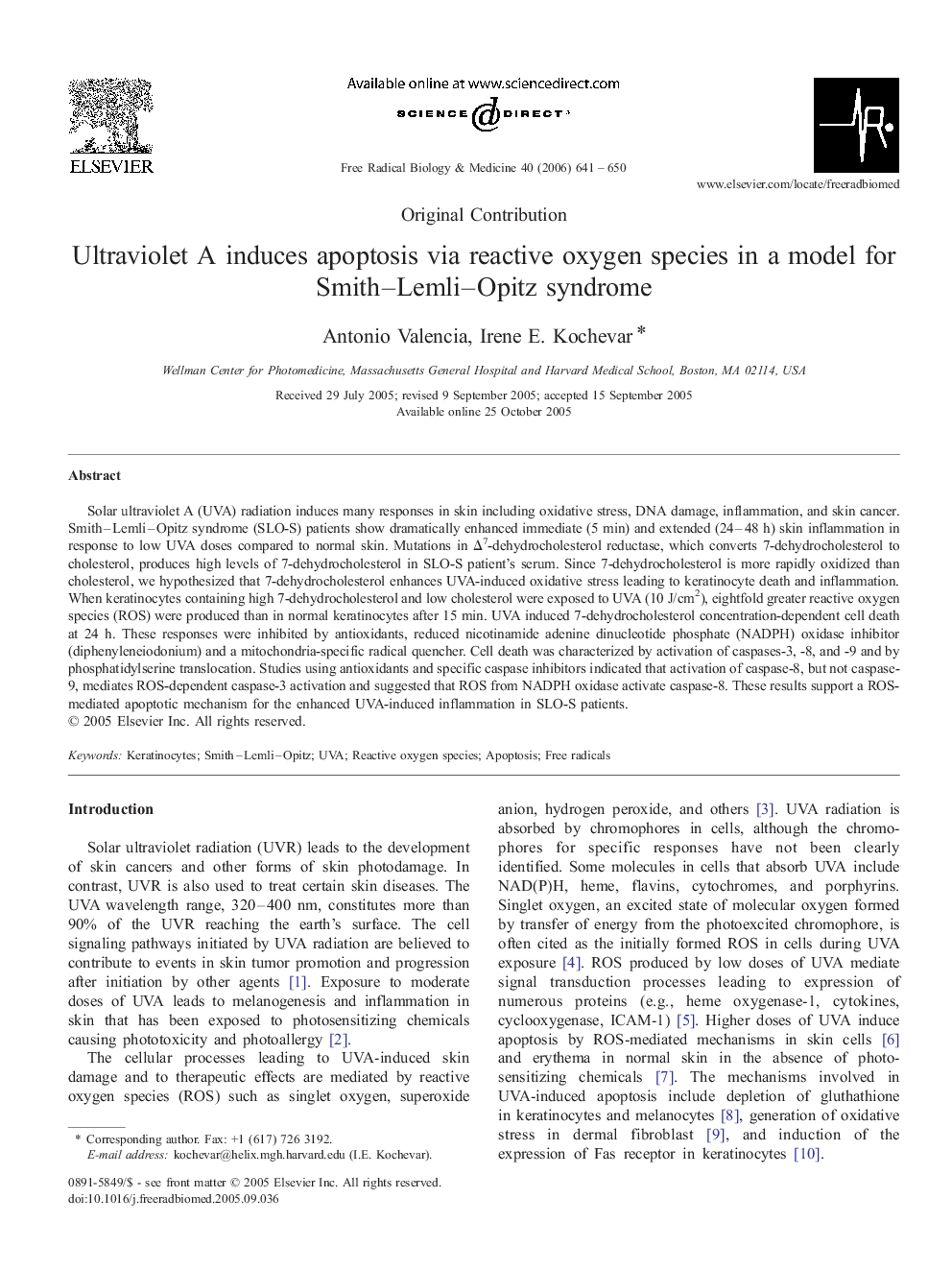| Article ID | Journal | Published Year | Pages | File Type |
|---|---|---|---|---|
| 1911732 | Free Radical Biology and Medicine | 2006 | 10 Pages |
Solar ultraviolet A (UVA) radiation induces many responses in skin including oxidative stress, DNA damage, inflammation, and skin cancer. Smith–Lemli–Opitz syndrome (SLO-S) patients show dramatically enhanced immediate (5 min) and extended (24–48 h) skin inflammation in response to low UVA doses compared to normal skin. Mutations in Δ7-dehydrocholesterol reductase, which converts 7-dehydrocholesterol to cholesterol, produces high levels of 7-dehydrocholesterol in SLO-S patient's serum. Since 7-dehydrocholesterol is more rapidly oxidized than cholesterol, we hypothesized that 7-dehydrocholesterol enhances UVA-induced oxidative stress leading to keratinocyte death and inflammation. When keratinocytes containing high 7-dehydrocholesterol and low cholesterol were exposed to UVA (10 J/cm2), eightfold greater reactive oxygen species (ROS) were produced than in normal keratinocytes after 15 min. UVA induced 7-dehydrocholesterol concentration-dependent cell death at 24 h. These responses were inhibited by antioxidants, reduced nicotinamide adenine dinucleotide phosphate (NADPH) oxidase inhibitor (diphenyleneiodonium) and a mitochondria-specific radical quencher. Cell death was characterized by activation of caspases-3, -8, and -9 and by phosphatidylserine translocation. Studies using antioxidants and specific caspase inhibitors indicated that activation of caspase-8, but not caspase-9, mediates ROS-dependent caspase-3 activation and suggested that ROS from NADPH oxidase activate caspase-8. These results support a ROS-mediated apoptotic mechanism for the enhanced UVA-induced inflammation in SLO-S patients.
